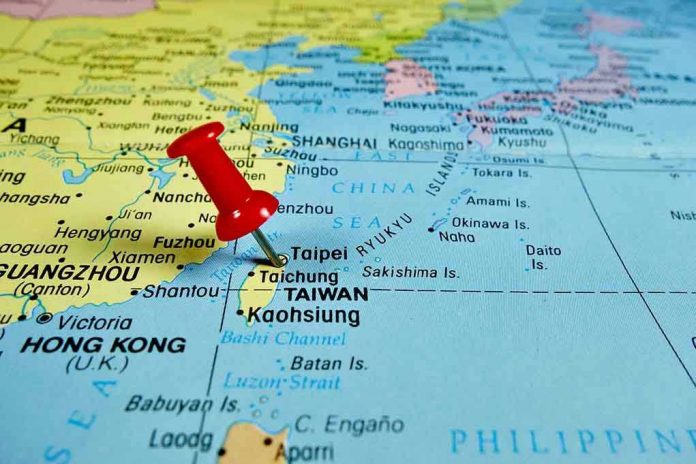
China has just redrawn the lines in the Taiwan Strait again, pushing their commercial air traffic right up to Taiwan’s doorstep—and they didn’t bother asking permission, as if international norms are just some speed bump on their road to regional dominance.
At a Glance
- China unilaterally activated a third extension of its contested M503 air route near the Taiwan Strait median line, escalating tensions.
- The move comes days before Taiwan’s Han Kuang military drills, raising concerns about Beijing’s intentions and timing.
- Taiwan’s government condemned the action as a threat to regional stability; China insists it’s all about civil aviation efficiency.
- Experts warn this “civilian” route could double as a military backdoor, undermining Taiwan’s security and international aviation norms.
China’s Airspace Grab: New ‘Civilian’ Route, Same Aggression
China’s Civil Aviation Administration announced on July 6 the sudden launch of the W121 extension to the M503 air route, a move that brings commercial flights from the mainland even closer to Taiwan’s airspace. If you’re wondering how this happens without a peep from the so-called “international community,” you’re not alone—Taiwan’s officials are fuming, and for good reason. The median line in the Taiwan Strait has been an unofficial buffer for decades, a fragile but functional truce to prevent accidental military skirmishes. Beijing never recognized it, but until recently, they mostly respected it. Those days are clearly over.
This is the third such airspace extension since 2024, and the timing is about as subtle as a sledgehammer: China rolled out the red carpet for W121 just days before Taiwan’s annual Han Kuang military drills. Nothing says “we’re just here for aviation safety” like crowding the skies before your neighbor’s biggest defense exercise of the year. Beijing claims it’s all about “flight safety, reducing delays, and protecting passenger rights,” but anyone with two brain cells to rub together can see a play for strategic leverage. Ask yourself: How many times does the Chinese Communist Party get to unilaterally rewrite the rules before the world figures out that these are not just aviation tweaks—they’re chess moves in a long game against democracy?
Taiwan Calls Foul, Beijing Shrugs, World Watches
Taiwan’s Mainland Affairs Council minced no words, calling China’s move an “unjustified, unilateral attempt to change the status quo.” For anyone keeping score, that’s diplomatic-speak for “stop pushing us around.” But China’s Taiwan Affairs Office responded with their usual bureaucratic doublespeak, insisting the new route benefits both sides and is nothing more than routine airspace management. Routine? If that’s routine, then up is down and left is right. The reality is that every new “civilian” corridor gives China a little more room to maneuver—literally and figuratively—around Taiwan’s defenses.
All three extensions—W121, W122, and W123—are now operational. China’s planes can now fly right up to the median line, and sometimes even cross it, under the convenient guise of “commercial” traffic. Taiwan is left to protest, scramble jets, and hope that a miscalculation doesn’t erupt into a full-blown international crisis. Meanwhile, the rest of the world seems content to issue statements and move on, as if every new incursion is just another line item on the list of things we’ll regret ignoring later.
Strategic Gray Zone Tactics: Civilian Facade, Military Reality
Security experts aren’t buying China’s “nothing to see here” narrative. They’re warning—loudly—that these so-called civilian corridors are a dual-use dream for the People’s Liberation Army. Need to move surveillance or fighter jets quickly? Just blend in with the traffic. Need to test Taiwan’s air defenses? Send a “civilian” plane a little too close and see who twitches first. It’s all part of Beijing’s “gray zone” playbook: keep the pressure on, never cross the line into open war, and watch the opposition wear down over time.
The stakes are sky-high, and not just for Taiwan. Every time China shifts the boundaries, it chips away at the credibility of international aviation standards and the idea that rules still matter in the 21st century. Airlines might save a few bucks on fuel, but they’re flying through a powder keg—and everyone knows it. As routes get closer and the median line fades into irrelevance, the risk of a catastrophic miscalculation grows. The message from Beijing is clear: what’s yours is negotiable, what’s ours is untouchable. And the West? Too often, they just watch and wring their hands.
Sources:
AeroTime: “China adds new M503 route near Taiwan, triggering protest” (July 6, 2025)













